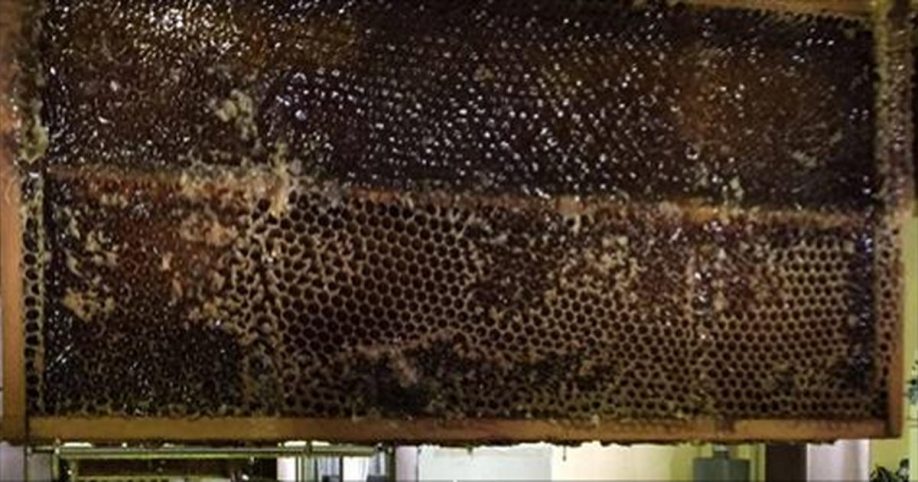Honey is an essential healing tool to get over the cold and flu and soothe a sore throat, but it can do so much more than that.
Recent studies have even determined that one specific type of honey can kill deadly bacteria more effectively than pharmaceutical antibiotics.
What Is Manuka Honey?
Manuka honey is produced in New Zealand by bees that pollinate the native manuka bush.
The nectar of the manuka flowers contains dihydroxyacetone, which is converted into methylglyoxal, the healing compound in Manuka honey. Other honeys contain this compound too, just in much smaller quantities.
Manuka honey can relieve pain, fight infection and speed the healing process. It was traditionally used topically to heal burns and infected wounds.
Hoe Manuka Honey Effectively Kills Bacteria

Manuka honey is equally effective against antibiotic-resistant and antibiotic susceptible bacteria.
“The unique property of honey lies in its ability to fight infection on multiple levels, making it more difficult for bacteria to develop resistance,” says Susan M. Meschwitz, Ph.D.
“That is, it uses a combination of weapons, including hydrogen peroxide, acidity, osmotic effect, high sugar concentration and polyphenols — all of which actively kill bacterial cells, she explains. The osmotic effect, which is the result of the high sugar concentration in honey, draws water from the bacterial cells, dehydrating and killing them.”.
Honey and Antibacterial-Resistant Bacteria
Enlarged cells containing septa were observed in MRSA exposed to inhibitory concentrations of manuka honey, suggesting that cell division was interrupted. These changes were not caused by either the sugars or methylglyoxal in honey and indicate the presence of additional antibacterial components in manuka honey.
When it comes to antibiotic superbugs like MRSA, Manuka has even more potent antibacterial activity than pharmaceuticals.
In fact, the honey doesn’t lead to antibacterial resistannce and even make bacteria more sensitive to antibiotic pharmaceuticals.
“Our findings with streptococci and pseudomonads suggest that manuka honey can hamper the attachment of bacteria to tissues which is an essential step in the initiation of acute infections. Inhibiting attachment also blocks the formation of biofilms, which can protect bacteria from antibiotics and allow them to cause persistent infections,” explains Professor Cooper of University of Wales Institute Cardiff.
“Other work in our lab has shown that honey can make MRSA more sensitive to antibiotics such as oxacillin — effectively reversing antibiotic resistance. This indicates that existing antibiotics may be more effective against drug-resistant infections if used in combination with manuka honey.”
The honey is also used in the treatment of ulcers, infected wounds and burns, Escherichia coli (E. coli), Enterobacter aerogenes, Salmonella typhimurium, S. aureus.
Laboratory studies have even revealed that the honey is effective against β-haemolytic streptococci and vancomycin-resistant Enterococci (VRE).
In some cases, these bacteria are completely destroyed after only 24 hours of exposure to a 20% honey solution. It’s so effective that hospitals have even begun to use medical-grade honey.
How To Find Real Manuka Honey
Manuka honey is typically sold in health food stores and online. It’s quite expensive, starting around 30-40 USD for 250g. Non-gmo or organic varieties are even more expensive.
Unfortunately, the honey industry has undergone a lot of fraud in recent years because of the increasing demand worldwide. True Manuka honey, which can only be produced in New Zealand, has become a rare commodity.
It was revealed that only 1,700 tons of Manuka are produced in New Zealand each year. As much as 10,000 tons are sold worldwide, with 1,800 tons sold in the UK alone, suggesting widespread fraud.
For Manuka honey to be pure and high-grade, it needs a minimum rating of 10 UMF (unique manuka factor). Honey at or above that level is marketed as “UMF Manuka Honey” or “Active Manuka Honey” (1). This term is regulated by the Unique Manuka Factor Honey Association.
Fake honey typically does not show the UMF level and is not produced in New Zealand.
